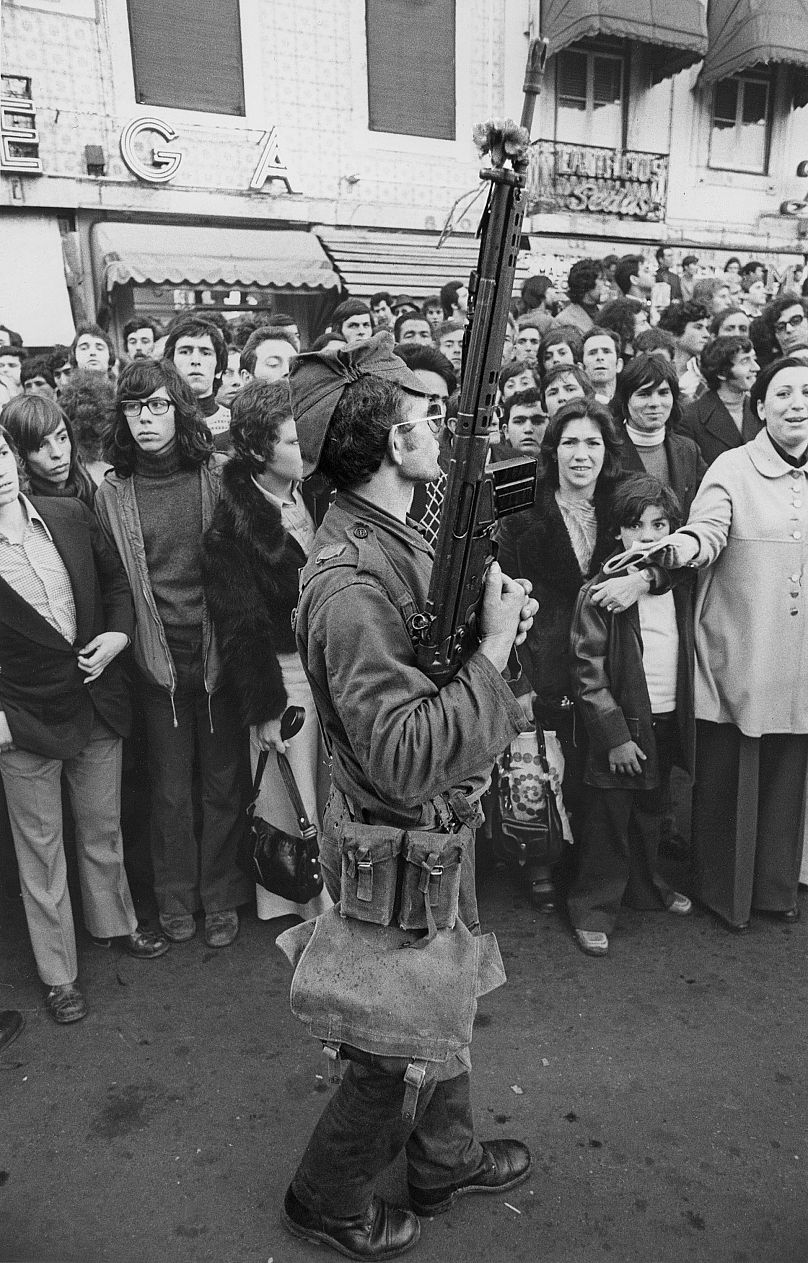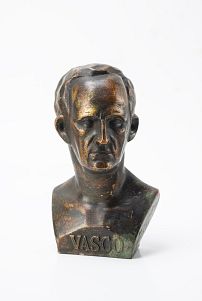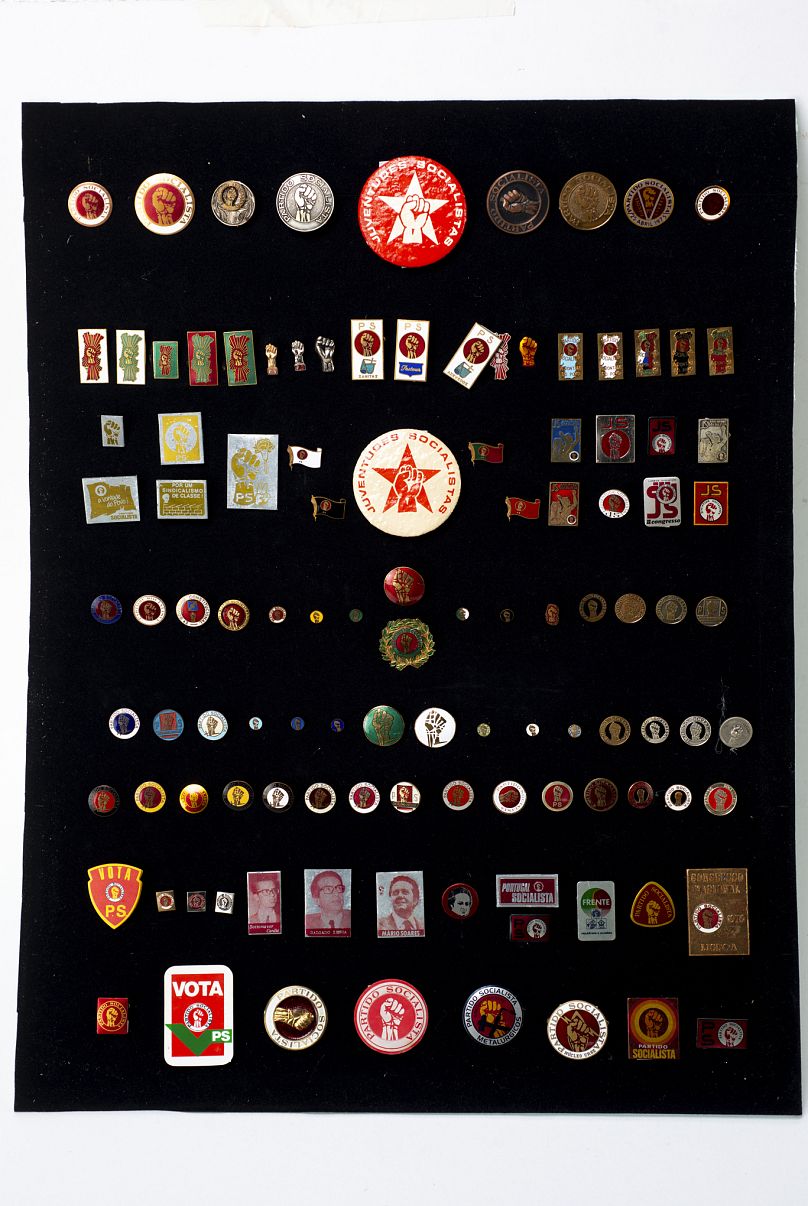The exhibition, as part of the municipality of Lisbon's celebrations of 25 April, aims to capture the essence of freedom that emerged after decades of censorship and repression.
The Boa Hora Court, in Lisbon, once a site where political prisoners were unjustly tried during the dictatorship, is currently hosting an exhibition that showcases the diverse and dynamic visual expressions of democracy in Portugal after the Carnation Revolution of 25 April 1974.
Posters, emblems, stickers, postcards, banners, ashtrays, plates, discs, and other objects from various political parties adorn the exhibition, offering a fascinating glimpse into the history of the country's transition to democracy.
Curated by esteemed historian José Pacheco Pereira, the exhibition, titled “Signs of Freedom – Iconography of Democracy in the Ephemera Archive”, is part of the municipality of Lisbon's celebrations of 25 April, a significant date in Portugal's history that marks the overthrow of the authoritarian regime.
With minimal captions, the exhibition aims to capture the essence of freedom - the joy of living, talking, discussing, and differing - that emerged after decades of strong censorship and repression.
What happened on 25 April 1974?
On 25 April 1974, a historic event unfolded in Portugal that would forever change the course of its history.
Known as the Carnation Revolution or the April Revolution, it was a peaceful military coup that led to the overthrow of the authoritarian Estado Novo regime.
Established in 1933 under the leadership of António de Oliveira Salazar, who served as Prime Minister from 1932 to 1968, and later Marcelo Caetano, the Estado Novo regime was characterised by a highly centralized and repressive government.
It deprived political freedoms, enforced press censorship, and ruthlessly suppressed dissent through the use of secret police.
But after 48 years of authoritarian rule, the revolution brought an end to Europe's longest-surviving dictatorship.
The revolution began with the daring act of a group of left-leaning military officers who, with carnations flowers pinned on their uniforms and in the barrels of their rifles, marched against the oppressive government in Lisbon.
Their bold action inspired a wave of protests and demonstrations across the country, as the people of Portugal demanded freedom, democracy, and an end to censorship.
In a matter of hours, the regime crumbled, and Portugal was catapulted into a new era of democracy, marking a turning point in the nation's history.
A significant catalyst for the Carnation Revolution was the aspiration to end colonisation in Africa, fueled by the violent and costly Portuguese Colonial War.
Subsequently, after the fall of the regime, decolonisation efforts gained momentum, leading to the independence of several Portuguese colonies in Africa, including Angola, Cape Verde, São Tomé, and Mozambique by the end of 1975.
What's on display at the exhibition?
This unique exhibition, hosted by the Lisbon City Council and the Ephemera Cultural Association, provides a unique window into the explosion of iconography that accompanied the dawn of freedom and democracy in Portugal after the momentous events of the 25th of April.
The "signs of freedom" were everywhere - on walls, streets, tables, lapels, overalls, helmets, and a wide range of materials such as ink, paper, fabric, plastic, glass, metal, cellulose acetate, canvas, clay, iron, stencil, and postage stamps.
The objects on display are not organised in a strict chronological order, but rather span nearly 50 years of freedom, with many originating from the early years of democracy when a special energy infused the air.
Some highlights include a 1976 campaign by the Democratic and Social Center (CDS) featuring a woman without legs, part of the "We want to respond" series, as well as a a bronze bust of Vasco Gonçalves by Abílio Belo Marques, a powerful portrayal of the former Prime Minister and military officer who played a crucial role in Portugal's democratic transition.
Notable objects from more recent times include an orange rooster from Barcelos used in a campaign by Fernando Reis of the Social Democratic Party (PSD) in 2009, a "little orange" sponge statue from the 1990s representing the youth wing of the Social Democratic Party (JSD), and a ceramic statue of Álvaro Cunhal dressed as a Futebol Clube do Porto player.
In addition to the objects on display, the exhibition also features a slideshow of around 200 images of graffiti and street art from across Portugal in recent years, highlighting the continued use of visual expressions as a means of political commentary and social critique.
The exhibition is free to the public and runs until 28 May at the Boa Hora Court in Lisbon.















